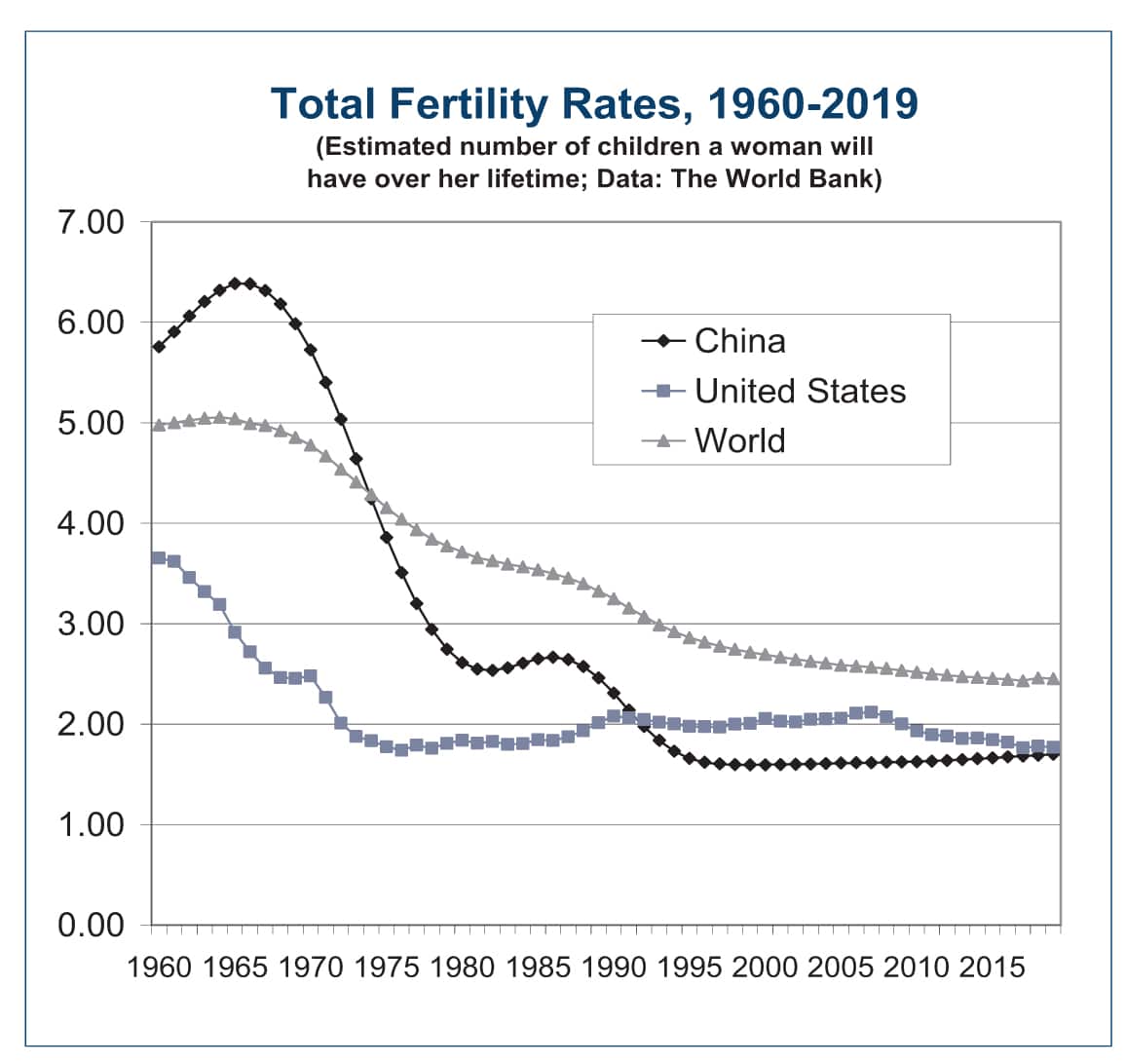Human Fertility and Climate Change
- Edwin S. Rubenstein
- April 28, 2020
- Forum Papers
- Forum Paper
- 0 Comments
Click here for a downloadable, printable PDF version
Human Fertility and Climate Change
An NPG Forum Paper
by Edwin S. Rubenstein
April 2020
Thomas Malthus warned that human population growth would outstrip the food supply. That fear largely dissipated when fertilizers, pesticides, and mechanized agriculture lowered the price, and increased the quantity, of foodstuffs. But today the very things that bailed us out of the Malthusian population trap are linked to global warming and plunging birthrates.
Has climate change reduced population growth? It’s hard to imagine that these two megatrends are not inter-related. The circumstantial evidence is overwhelming. Total fertility rates – the number of children a woman will likely have over her lifetime – have been below the 2.1 “replacement” rate for more than 25 years in China and the U.S., though they remain stubbornly above that level in the rest of the world:
A different fertility metric – births per every 1,000 women of childbearing age – fell to a record low of 59 in the U.S. in 2018, according to the National Center for Health Statistics.1 The rate has fallen about 15% since 2007.
Fertility rates tend to fall during hard economic times, as people postpone having babies, and then rise as the economy recovers. That is what happened during and after the Great Depression of the 1930s. But this time around, the birthrate has not recovered. A brief uptick in 2014 did not last.
Even population experts are puzzled. “It’s hard for me to believe that the birthrate just keeps going down,” Kenneth M. Johnson, a demographer at the University of New Hampshire, says.2 Mr. Johnson estimates that 5.7 million more babies would have been born in the U.S. since 2007 had birth rates remained stable since then.
Birth rates have declined for all age groups, except for women in their late 30s and early 40s. More than half of women who gave birth at these ages had college degrees, a much higher share than among women who had children in their 20s – suggesting that women increasingly postpone childbirth to complete their education.
Meanwhile, the 2010s were the hottest decade on record, and 2019 the second warmest year ever. Average global surface temperatures last year were nearly 1.8 degrees F. above the average at the middle of the last century. Since the 1960s one, by significant amounts. The trend is driven mainly by emissions of CO2 and other heattrapping emissions from the burning of fossil fuels…
Continue reading the full Forum paper by clicking here.
Ed Rubenstein, president of ESR Research, is an experienced business researcher, financial analyst, and economics journalist. He has written extensively on federal tax policy, government waste, the Reagan legacy, and – most recently – on immigration. He is the author of two books: The Right Data (1994) and From the Empire State to the Vampire State: New York in a Downward Transition (with Herbert London). His essays on public policy have appeared in The Wall Street Journal, The New York Times, Harvard Business Review, Investor’s Business Daily, Newsday, and National Review. His TV appearances include Firing Line, Bill Moyers, McNeil-Lehr, CNBC, and Debates-Debates. Mr. Rubenstein has a B.A. from Johns Hopkins and a graduate degree in economics from Columbia University.


